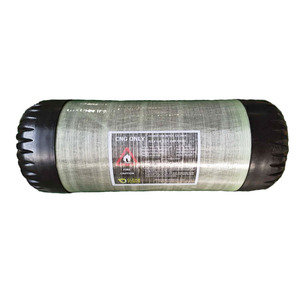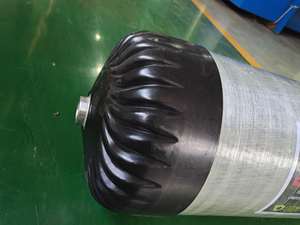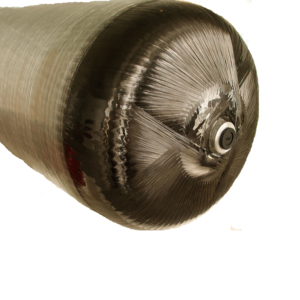
All categories
Featured selections
Trade Assurance
Buyer Central
Help Center
Get the app
Become a supplier

(9 products available)






































A SGS BIFMA X5.1 gas spring is an essential component in many office and other seating arrangements. It provides adjustable hydraulic lift and support for the following types:
Class 3 Gas Spring
This gas spring is made of high-quality materials. It is usually constructed with steel and has a chrome or black coating. This helps to improve its durability and corrosion resistance. It is designed and constructed to support chair weight ratings of up to 150 kg.
DIN 4550 Gas Spring
This gas spring is manufactured according to the German standards specified under DIN 4550. It is suitable for office chairs, ergonomic seating, and other applications where adjustable height and back support is needed. This gas spring provides reliable performance and enhanced durability and is suitable for chairs with weight ratings of up to 200 kg.
TUV Certified Gas Spring
This gas spring has been tested and certified by a TUV Rheinland, an internationally recognized testing and certification body. The certification ensures that this gas spring meets international standards for safety and performance. A TUV-certified gas spring provides reliable and enhanced durability for office chairs and other applications. It is suitable for chairs with weight ratings of up to 180 kg.
EN 1335 Gas Spring
This gas spring is manufactured according to the European standards specified under EN 1335. It is suitable for office chairs and other seating arrangements requiring adjustable height support and backrest. This gas spring provides enhanced performance, reliability, and durability and is suitable for chairs with weight ratings of up to 160 kg.
SGS Gas Spring
This gas spring is manufactured by the SGS company. The company conducts various tests to ensure that the gas spring meets the international standards for safety and performance. An SGS gas spring provides reliable performance and is suitable for chairs with weight ratings of up to 140 kg.
Height Adjustment
Class 3 gas springs are popular for their use in making adjustable office chairs and other types of seating. They allow for effortless height adjustments. Users can push a lever, and the chair will go up or down. This lets people set the chair at a comfortable height for their desk or workstation. The gas spring does this by balancing the weight of the user against the pressure inside. When the chair is raised or lowered, the gas spring stays the same. It's perfect for ergonomic seating where users need to adjust the height.
Seat and Backrest Recline
Another important function of these gas springs is allowing office chair recline. When users want to lean back, the backrest support and seat cushion can tilt backwards smoothly. The gas spring provides just the right amount of resistance so users feel comfortable reclining. It supports the natural curvature of the spine while relaxing in the chair. This recline function is crucial for ergonomic chairs that cater to long sitting hours at workstations. Being able to lean back helps reduce stress on the lower back and promotes overall comfort.
Stability and Load Distribution
Gas springs of this class provide stability for adjustable seating. Their internal pressure creates a lifting force that counteracts gravity pulling downwards. This helps balance the chair and distributes weight evenly across the seat, backrest, and legs. It also ensures smooth height adjustments without sudden drops or jerks. Proper load distribution extends the durability of the chair components as well. Overall, stability and load handling allows for safe, comfortable seating that supports varying user weights. Heavier users will not experience any issues with the chair collapsing or tipping over.
The gas lift cylinder is used in various applications, including:
Consider The Weight Capacity
The first step in choosing the right gas lift for a chair is determining the weight capacity required. This involves considering the weight of the user or users and any additional weight that may be placed on the chair. For instance, if the chair will be used in an office setting, it is essential to consider the weight of the user and any items that will be stored in the chair, such as briefcases or luggage.
Height Adjustment Range
It's important to check the height adjustment range of the gas spring to ensure it meets the desired height requirements for the chair. Different gas springs offer varying minimum and maximum height settings, so it's essential to select one that provides the necessary range. For example, an office chair typically requires a specific height adjustment to accommodate desk clearance and user comfort.
Durability And Quality
When selecting a gas spring for a chair, prioritizing durability and quality is crucial. Look for options that feature high-quality construction materials, such as reinforced steel or heavy-duty plastic components. This ensures the gas spring can withstand frequent use and provide long-lasting performance.
Compliance With Standards
To ensure the reliability and safety of the gas spring for the chair, it is essential to verify its compliance with industry standards. Look for certifications such as TUV, SGS, or BIFMA, which indicate that the gas spring has undergone rigorous testing and meets specific performance criteria.
Compatibility
When selecting a gas spring for a chair, ensuring compatibility with the chair design and construction is essential. Consider factors such as mounting options, stroke length, and diameter. The mounting options, stroke length, and diameter are vital in determining the proper fitting and functionality of the gas spring.
Q1. What are the benefits of Class 3 gas springs?
A1. The advantages of Class 3 gas springs include their lower weight, cost-effectiveness, and enhanced performance in various temperature settings.
Q2. What are the limitations of Class 3 gas springs?
A2. Limitations of Class 3 gas springs include a shorter lifespan compared to higher-class gas springs and the potential inability to support heavier loads.
Q3. How does one install a gas spring?
A3. The gas spring is installed by securing it to the desired location using brackets or mounting hardware. It is then connected to the gas lift chair's frame and the seat to complete the installation.
Q4. How does one troubleshoot a gas spring?
A4. Common issues include leaks, insufficient lifting force, and improper positioning. Leaks can be fixed by tightening the connections or replacing O-rings. Insufficient lifting force may require charging the spring with gas or adjusting the pressure. Improper positioning can be resolved by repositioning the mounting brackets.
Q5. How does one maintain a gas spring?
A5. Maintenance involves regular inspection for leaks, checking the lifting force, and ensuring proper positioning. It may also include lubricating the spring and tightening connections.